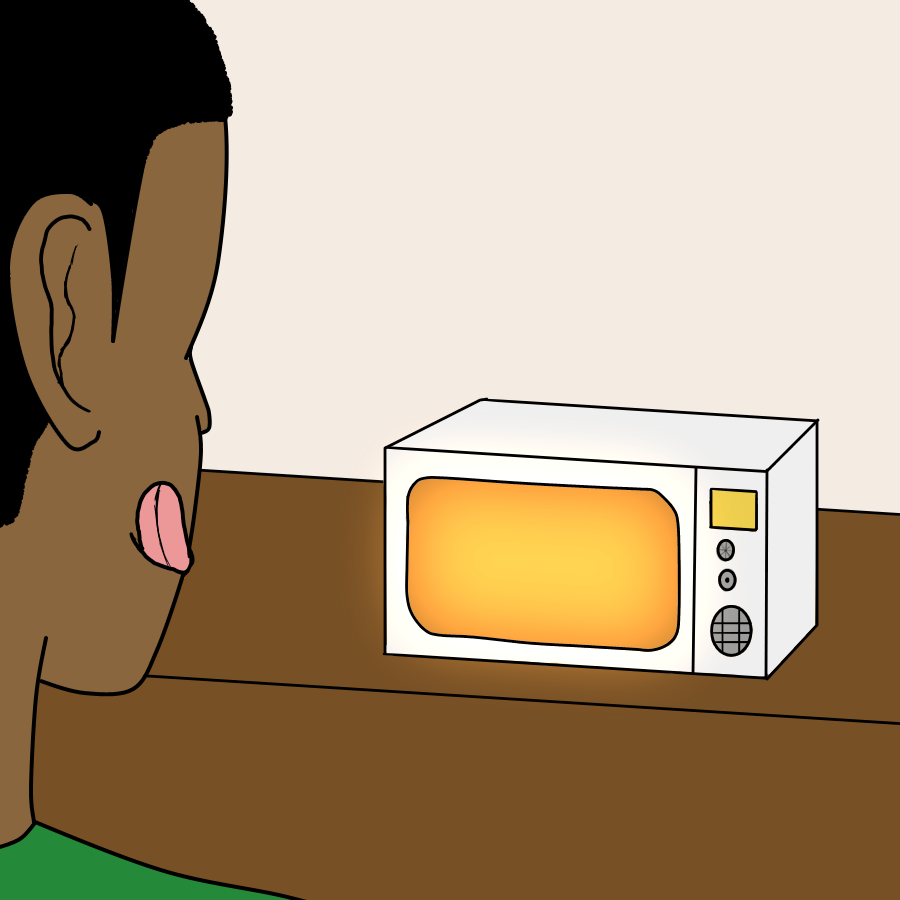Opinion | Simple hacks to elevate meals will improve your relationship with food


My love for cooking developed as a child. I made banana soup that consisted of blended bananas and coffee creamer when I played “restaurant” with my friend. I talked aloud when I prepared lunch for myself and pretended I had my own Food Network show. I wasted a lot of flour on failed experimental recipes, but was determined to keep trying. In high school, I eventually became the person who brought olive oil and fig cakes to the Latin Club party because I can’t resist a theme. I brought mashed potatoes in a crockpot to school — yes, mashed potatoes — on multiple occasions and made cookies to give out the day before winter break.
Although I have always had a passion for food, my relationship with it has never been particularly healthy — but the pandemic strained my relationship with food in ways I couldn’t have imagined.
I not only fell out of love with cooking for myself, but also with feeding myself. It soon became a chore to eat. I perceived cooking as something that took too much time and was simply not worth my effort. I still ate, but my food intake decreased dramatically and my body slowed. I still struggle with these unhealthy perceptions of food and eating, but I’m trying to break free. I want to enjoy food again, and simple but sophisticated hacks have allowed me to reclaim some of that love for food with you, dear reader.
I grew up in a household where food was continually a contentious issue. I didn’t understand how much of the negative connotations surrounding food, weight and body presentation I absorbed, even when my body and diet wasn’t the subject of scrutiny. But it didn’t matter, because I forged a relationship with food modeled after how others perceived it, and food was meant to be carefully monitored and put within rigid bounds. Not until recently did I start to see the effects, once I began to unpack my body dysmorphia and disordered eating habits with my therapist. Diet culture, beauty standards and so-called “healthy living” all maliciously infiltrated my developing mind and became ever-embedded deep in my brain. I’ve held onto the manipulated image of food forced upon me for a long time. I’m trying to let go.
So many people struggle with eating disorders and disordered eating. I’ve had a very taut relationship with food since I was in elementary school and it’s something I still struggle with today, but ultimately, I know two things are true — there is too much delicious food out there to eat, and we need to eat to survive. So why not make the most of your meals and enjoy them as much as you can?
Take garlic confit, for example. I saw multiple TikTok recipe videos before making my grand attempt, and I am so glad I did. All you have to do is buy a $3 bag of peeled garlic from Aldi, place the garlic in an oven-safe dish, cover the garlic with olive oil and let it cook at 200 degrees for a few hours. When you’re done, strain the garlic oil and put it in a resealable container, place the garlic in a glass container and pop it in the fridge.
I like to slap some garlic confit in a pan with fresh basil, tomatoes and pasta for an easy meal ready in 20 minutes. I also use the garlic in salad dressings, on toast and with rice. And because it’s so versatile, the garlic confit and oil are able to infiltrate a number of your regular dishes and easily elevate their flavor profile, if I may use fancy chef-speak.
I’ve also made basil oil by blending fresh basil with, and this may come as a surprise, oil! After all of the basil chunks are basically gone, use a fine mesh strainer or standard coffee filter, wait a few hours for it to strain and voila, you have a delicate oil you can drizzle on anything you want.
Another one of my weekly staples is oven roasting a whole chicken. I know this may sound like an extensive, labor-intensive process, but I promise it’s incredibly easy and the final product is delightful. All you need is a baking sheet or pan, some tinfoil, a whole chicken — I suggest the free range, certified-humane ones at Aldi or Trader Joe’s, but do whatever is in your price range — and whatever spices you like, but if you’re asking me, garlic and onion powder are a necessity. I preheat the oven to between 350 and 400 degrees, rinse my chicken under the tap, throw some foil on the tray, cover the chicken skin in seasonings and check on it every so often.
It drives my partner crazy, but I never set a timer for how long things go in the oven. I let my nose tell me when it’s done. If you’re not as trusting of yourself, you can find an endless amount of recipes online — like this 5-star one from the New York Times — with more specific instructions. After I shred the meat, I have over a week’s worth of chicken that I can use for salads, in frozen stir-fry packs, on sandwiches or even simply eating it cold while crouched in front of the fridge — my personal favorite. Something as simple as roasting a chicken helped increase my food intake and made me look forward to eating. Having a protein-dense, crave-worthy staple that is already prepared has made feeding myself much easier, even if it’s just shoveling chicken into my mouth at 10 a.m. on a Tuesday
What matters most is not how you look when you’re feeding yourself, no matter how deeply you enter into goblin-mode while doing so. Instead, it’s about eating enough to sustain your body!
It’s easy to fall out of love with food when the options at your disposal are expensive and unsatisfying. Most of us don’t know what it’s like to eat with the seasons, are unable to work with fresh herbs and produce, and are subject to preparing food in our dinky little college dorms and mediocre kitchens. It sucks a lot of the fun out of both eating and cooking, but I found that if I get excited over the meals I’m going to eat, I get more excited about making them and am then able to feed myself with intention and help repair my relationship with food.
Life is too short to eat bad food. Learning to cook can be intimidating, but don’t attempt to replicate what professionals are demonstrating. Find a cooking style, as chaotic as it may be, that enables you to feed yourself with food that feels good.
Grace DeLallo writes about social, environmental and political issues. Write to her at gkd5@pitt.edu.
Recent Posts
SGB addresses concerns about ICE presence on campus, hears SJP lawsuit against administration, approves governing code bill
At its weekly meeting on Tuesday at Nordy’s Place, Student Government Board heard concerns about…
ACLU of Pennsylvania sues Pitt over SJP suspension
The ACLU of Pennsylvania filed a federal civil lawsuit against the University of Pittsburgh and…
Marquan Pope: The ultimate shark
One of the most remarkable things about sharks is that an injury doesn’t deter them.…
Who Asked? // Do we really get a summer vacation?
This installment of Who Asked? by staff writer Brynn Murawski mourns the seemingly impossible perfect…
Notes From an Average Girl // Notes from my junior year
In this edition of Notes From an Average Girl, senior staff writer Madeline Milchman reflects…
Meaning at the Movies // The Power of the Movie Theater
In this edition of “Meaning at the Movies,” staff writer Lauren Deaton discusses her love…
